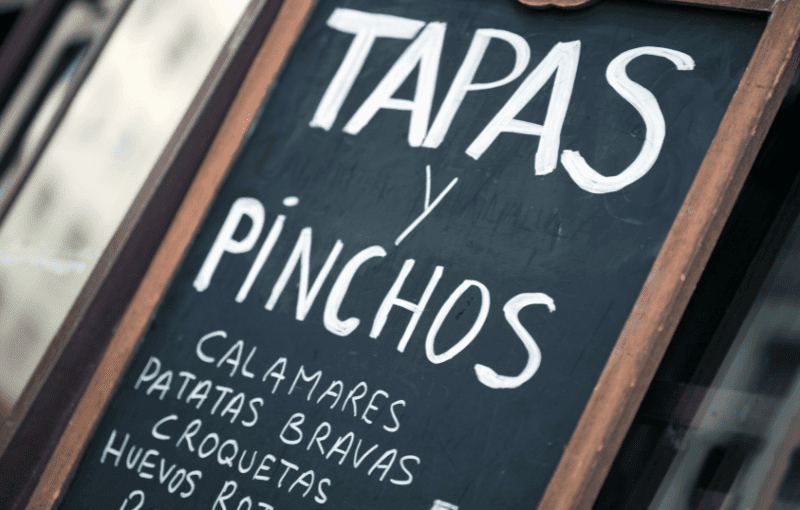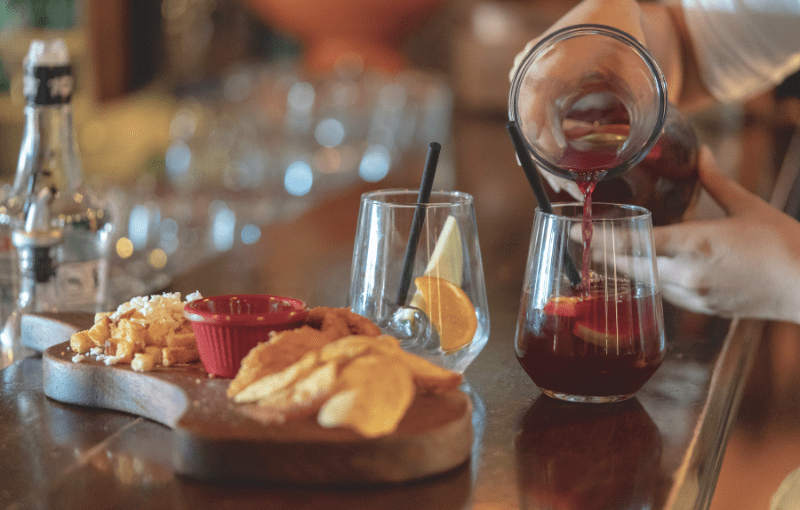I still remember the first time I set foot in Spain. I had just arrived in Sevilla, brimming with excitement to finally learn Spanish in Spain and put my skills to the test. But the moment I tried to say “hello,” I froze. It felt like all the years I had spent learning the language had suddenly gone to waste. Anxiety took over, and I found myself completely blocked, unable to understand a single word that was being said to me. It was as if my brain had shut down, leaving me stranded in the middle of a vibrant, historic city, lost in translation.

But then, I took a deep breath and reminded myself to relax. I focused on the tips I had learned—going for the gist of what was being said, using body language, and not being afraid to make mistakes. Slowly, my ears started to adjust to the rhythm of the language, and the words began to make sense again. As I relaxed, I realized that understanding and speaking Spanish was as much about confidence and connection as it was about vocabulary and grammar.In this guide, I’ll share with you some of the most important conversation tips and cultural insights I’ve gathered from my own journey. These strategies will help you feel more at ease and ensure that you can truly immerse yourself in the vibrant life and language of love through Spanish immersion. And if you’re ready to start your own adventure, you might want to check out some of the Spanish language immersion programs for adults that could take you there.
Going Beyond ¡Hola!: Saying Hello Like a Local

When you arrive in Spain, a simple “¡Hola!” will get you started, but there’s more to greeting people like a true local. In Spain, greetings often include a kiss on each cheek (yes, even if you’re meeting for the first time!). In more formal settings, a firm handshake is appropriate, but in casual environments, the double-cheek kiss is the norm. Also, don’t be surprised if conversations begin with a cheerful “¿Qué tal?” (How’s it going?). It’s a friendly and informal way to start any interaction.If you’re in the south of Spain, you might even hear “¡Qué pasa!” (What’s up?), a regional variation that adds a touch of local flavor. Depending on where you are, you might also notice differences in Spanish dialects in Spain, which can add another layer of cultural richness to your experience. Knowing these variations helps you blend in and shows your respect for local customs, making your conversations more authentic and engaging. For those looking to dive deeper into the local culture, exploring a Spanish language course in Spain designed to fit your needs might be the perfect next step.
Navigating the Etiquette of Food and Drink in Spain
One of the joys of being in Spain is the food—and it’s a joy you’ll experience often. But there’s a bit of etiquette to keep in mind when sharing a meal. For instance, when you’re out with friends and enjoying tapas, it’s common for everyone to share the dishes. Tapas are small, flavorful dishes that are meant to be shared, and they’re a central part of Spanish dining culture. It’s not just about the food, but about the experience of being together. And when the bill comes, don’t be surprised if everyone insists on splitting it evenly. This practice, known as “pagar a medias,” is the norm and shows a sense of equality and camaraderie.
You might also hear the phrase “te invito,” which literally means “I invite you,” but in practice, it means “It’s on me” or “I’ll pay for this.” It’s a gesture of generosity and hospitality that’s very common in Spain. If someone says this to you, it’s polite to accept graciously, but keep in mind that you’ll likely be expected to return the favor next time. It’s part of the social give-and-take that helps to build relationships.
When it comes to drinks, if someone buys you a drink, it’s also customary to reciprocate during the next round. Remember, meals in Spain are often long and leisurely, so take your time, enjoy the conversation, and immerse yourself in the moment.
And if you’re interested in combining your love for food with language learning, some of our partner schools in Spain offer Spanish + cooking classes as part of their programs. To explore these and other immersive experiences, take a look at our language travel programs that provide opportunities in various countries, including Spain.





Taboo Topics: Navigating Sensitive Topics in Spanish Conversation
While Spaniards are generally open and friendly, certain topics are better approached with caution, especially when you’re just getting to know someone. Politics and religion, for example, can be particularly sensitive. While locals might engage in discussions on these topics, as a visitor, it’s wise to tread lightly. Timing and context are key—these are conversations best reserved for when you’ve developed a stronger relationship.
Discussing money is another area where caution is advised. Questions about personal finances or the cost of things can come across as intrusive. Similarly, when it comes to someone’s personal life, especially relationships or family matters, it’s best to respect boundaries until you know the person better. Observing and following the lead of your conversation partner is a safe strategy.
Understanding Spanish Punctuality (or Lack Thereof)

If you’re used to strict schedules, Spain might require some adjustment. Spanish punctuality is famously relaxed, especially in social settings. If a friend invites you to meet at 8 PM, don’t be surprised if people start arriving closer to 8:30. This laid-back approach to time is part of the easy-going lifestyle that characterizes much of Spain.
However, it’s important to note that in professional settings, punctuality is more respected, though even then, meetings might start a few minutes late. Adapting to this relaxed approach can take some getting used to, but it’s also part of embracing the Spanish way of life.
Corporal Language: Gestures to Avoid and Embrace in Spanish Conversations
In Spain, body language is an integral part of communication. Spaniards are generally expressive, using gestures to emphasize their points. However, there are some gestures you should avoid. For instance, the “OK” hand gesture (a circle made with the thumb and forefinger) can be interpreted as rude in Spain.
On the other hand, gestures like the “thumbs up” to signify approval or using open hand movements to express sincerity can enhance your interactions. Observing how locals use their hands and mimicking their style is a great way to improve your non-verbal communication and connect more deeply with the people around you.
Embrace the Journey
Looking back on my first days in Spain, I can’t help but smile at how much that experience taught me—not just about the language, but about the culture and the people who make this country so vibrant. Those initial moments of anxiety and self-doubt were just the beginning of a journey filled with discovery, connection, and growth. By embracing the cultural nuances, from the way you greet someone to how you navigate conversations over a plate of tapas, you’re doing more than just learning Spanish in Spain—you’re becoming a part of the rich tapestry of life in Spain.

Kate Atkinson, who took a beginner Spanish class at ILI in Northampton before her vacation, shared a similar sentiment: “We had a vacation planned in Spain, so I signed up for the intro language class at ILI, little realizing what a jewel it would be. Our dynamic teacher made learning engaging and fun, which helped me push past the awkwardness of using a new language.”
She continued, “Although many people spoke English in Spain, I had situations where the class was invaluable—making dinner reservations, paying for parking, and even helping an injured child. It was a huge relief to have the skills to navigate these situations and much more fun to travel with some comfort in the language. I felt like a traveler, not just a tourist.”If you want to feel prepared and confident for your journey, exploring a Spanish language course designed to fit your needs could be the perfect next step. As you prepare for your own adventure, remember to take a deep breath, relax, and savor every moment. It’s not just about speaking the language; it’s about living it. With these tips in your back pocket, you’re well on your way to making meaningful connections and creating unforgettable memories. ¡Buena suerte y disfruta de cada paso del camino!

Related articles:
- Beginner to Intermediate Spanish: 4 Simple Steps to Achieve it
- Best ways to learn Spanish online moving forward in 2024 (part 1)
- Best ways to learn Spanish online moving forward in 2024 (part 2)
- Our Top 4 Destinations to Learn Spanish Abroad
- A guide for beginners on how to learn Spanish
- Kathy Learning Spanish (again): Interview with Spanish language student living in the USA
- Alice Tells Her Story: An Interview with a French and Spanish language student living in the USA
